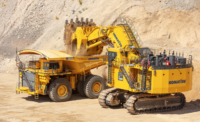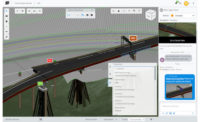Q&A With the Minds Behind DeWalt’s New 12V MAX Tools
For its new 12V MAX line of hand tools, DeWalt, Towson, Md., experimented with several different designs. Lead project engineer Eva Dixon and Christine Potter, director of new business marketing, spoke with ENR about the tool development process.


ENR: What was the drive behind creating this new line of tools?
Potter: With the advancements in lithium-ion battery technology, we had an opportunity to develop cordless tools that were smaller in size and lighter in weight. The 12V MAX line is ideal for fastening up to approximately 3-in. screws or drilling up to 1/2-in. holes, and it appeals to a variety of trades.
What technical problems had to be overcome during development?
Dixon: The challenge for engineering was that smaller size/lighter weight often conflicts with durability and performance. To make the proper trade-offs during the design [phase], we spent a lot of time analyzing the applications performed by our end users in the field. We would collect and analyze the details of our users’ jobs.
What is your prototyping process, and how did it contribute to the development of the tool?
Dixon: We used our in-house prototyping to develop over a dozen configurations, which we used in field research. As a result of the prototype research, we ended up positioning the battery pack at the bottom of the handle. The battery placement provides an optimized handle design for comfort and balance and allows the tool to stand up in between uses.
How do ideas that work on paper change as you move on to prototyping and testing?
Dixon: We thought several of the handle configurations were promising. However, when we worked with users in the field, we received feedback that some configurations weren’t ideal when the range of applications—drilling overhead, down or horizontal—were considered.
What goes into the process for the development of new tools or the updating of existing tools?
Dixon: One important part of our process is that we constantly work with end users in the field. We utilize this process to ensure that we incorporate past [lessons] as well as follow a consistent process. Both our engineering and marketing [departments] work with our end users on concept feedback and product testing throughout the full development cycle.




